Picture this: it’s a cold Friday night in March and you’re headed down to the local watering hole with a group of friends. They’ve never wrestled before, but agreed to watch the NCAA Semifinals with you. The barkeep turns on ESPN, the matches begin, and within seconds the questions start rolling in.
“How do you score points?”
“What happens if you tie?”
“Why aren’t they doing anything?”
“What does stalling mean?”
“Wait, I thought stalling was for avoiding wrestling, why did he get called for holding onto his leg?
You do your best to describe the basic ruleset. Your favorite wrestler gets a takedown in overtime and everyone goes wild. Someone gets a come-from-behind pin and they jump out of their seats. Then suddenly a match goes to overtime and no one scores on their feet. You frantically try to explain that the sudden victory rule no longer applies, though it may come back in a minute. The first 30 second period is over before you can even explain why the riding time clock was reset. The next two matches end 3-1 and you can see their interest starting to fade. Frustration builds as they break into a discussion about hockey and before long it becomes clear that you’ve lost them. Any hopes of creating new fans are extinguished, and you haven’t even reached 157.
Why is this? What makes wrestling such a poor viewing experience for people who don’t know the sport? As alluded to in that hypothetical scenario, the two biggest things that seem to turn people away are the complex ruleset, and boring matches caused by stalling. These two issues can ruin a match for even a diehard fan. But what if the two were actually linked to one another, and could be eliminated with one simple change?
Time for a history lesson. About 150 years ago, wrestling had made its way over to the United States and existed in various forms, but the most popular was catch-as-catch-can, in which two competitors tried to force their opponents’ shoulders to the ground by any means possible. This was called a “fall.” There were no other rules besides the barring of striking, gouging, and strangling. As popularity grew, technique improved, and it became more and more difficult to obtain a fall. Eventually a time limit needed to be introduced to prevent matches from lasting hours. The duration of a match changed constantly and ranged anywhere from 6 minutes to an hour. At the conclusion of the time limit the referee would award a decision to “the contestant having shown the best qualities, or who evidently has acted mostly upon the offensive.”
This soon led to the existence of stalling, as wrestlers would get a takedown or two and hang on until time expired. Several rules were implemented to attempt to prevent this over the next few decades including bonus points for pins, conceding position of advantage if called for stalling, the barring of locked hands on top, and even disqualification for evading wrestling. In fact many rules that we still use are all derived from this need to prevent stalling.
Eventually in 1940 the NCAA implemented a point system. They cited four reasons for why this was done:
1. Increase spectator interest.
2. Decrease stalling.
3. Increase active, aggressive wrestling because of the greater premium put on near-falls.
4. Make decisions more objective, thereby relieving the referee of considerable responsibility and criticism of the subjective decisions used heretofore.
By all accounts, this was a complete disaster. The following year, the NCAA released a report reflecting on this experiment, which detailed how this change caused stalling to skyrocket. The report states that wrestlers prefer “to ‘play safe’ and win matches by decision by narrow margins rather than to risk the loss of a small point margin previously earned.” The one positive takeaway was that it greatly improved spectator interest, as it helped fans to be able to tell who was winning each match and to learn to evaluate the quality of wrestling moves due to the points being awarded for them.
Over the next few decades, the rules were tweaked to incentivize scoring and more clearly define stalling so offenders can be penalized. This has led to the current ruleset, which is a marked improvement, but the fact remains that stalling still plagues our sport to this day. When a wrestler gains a lead near the end of a match, he/she naturally tries to reduce risk of losing their point advantage. Every year new rules are added that help remove subjectivity from the referee and force action in matches, but these changes are only really tracked by people who are closely tied to the sport and have actual wrestling experience. The irony is that by adding rules in hopes of making the sport more spectator friendly, you alienate the casual spectator who hasn’t combed through the rulebook to understand the countless rules involving very specific situations. But both stalling and all of these complex rules could be eliminated with one change: get rid of the time limit.
Am I saying we go back to the 1800’s style and wrestle until someone gets a pin? Of course not. That could literally take days to complete a tournament. Instead, we set a point value that you have to reach in order to win, like tennis in a sense. A rough version of this system could look like this:
Takedown: 2 points
Near fall for 3 swipes: 2 points
Reversal: 1 point
Step-Out: 1 point
Penalties: 1 point
First wrestler to reach 6 points wins.
That’s it. Now there’s no reason to stall since the match doesn’t end until you score enough points. You’re forced to maintain action for the whole match because you can no longer hang on to a lead and let time expire. Go ahead and drop to a leg and hang on, you’re just burning energy that could be used scoring your next takedown.
The stepout point is crucial to this system, as it forces points onto the board. The infamous Suriano vs. Fix 35 minute match lasted that long because they could go out of bounds without giving up a point. This rule both ensures that matches won’t last forever and prevents people from playing the edge as a way to avoid giving up points. Additionally the escape point can be eliminated because you don’t need to give the bottom wrestler any incentive to get out. If you’re stuck on bottom, you aren’t scoring, so your only path to victory is to get back to your feet. This will inevitably lead to more neutral wrestling, which is widely considered to be the most entertaining to watch.
In addition to preventing stalling and simplifying the ruleset, this system hikes up the excitement in one other way: every match ends on an action. You know the sudden rush of watching a takedown in overtime? Now every match ends that way. Gone are the days of watching national champions be crowned after a minute-long rideout to win 4-1. Now the crowd gets to witness a win be punctuated in a single moment rather than a slow build of realization. They get to root for wrestlers to score rather than “wrestle smart.”
This seems like a massive change, but really isn’t a huge departure from the current ruleset. The basic scoring mechanism is essentially the same, and all current techniques will still be equally as effective. The biggest way these rules would directly influence the in-match actions of the wrestlers is by making them more conscious of mat control, which is a big step towards preparing college wrestlers for international competition. In fact, these rules would be a perfect compromise between keeping the tradition of folkstyle and introducing elements of freestyle. They create a bigger focus on neutral wrestling and controlling the center of the mat, but by still barring locked hands and requiring control and a count for near fall, you preserve the mat wrestling techniques and more dynamic scrambling that are staples of folkstyle. Lastly, it appeases old school fans that like to tout the “toughest sport” moniker; close matches will require maybe even more grit and endurance, but blowout matches will just be decided more efficiently.
Is this system perfect? Probably not. It would take a couple years of fine-tuning, and it’s possible it could not work at all. But there is one application for this ruleset that should be implemented immediately: adult league. In recent years, adult participation in jiu jitsu has skyrocketed, but there still aren’t really any options for wrestlers who aren’t on the senior circuit to compete. There’s a few reasons for this, but the main one is that most people past their early 20s aren’t in that great of shape. Jiu Jitsu requires much less cardio than wrestling does, and the thought of wrestling a 7 minute match is horrifying to a former wrestler. But having to only wrestle to a set number of points is far less daunting.
Obviously, these rules bear some resemblance to the rules of beach wrestling, which draws decent participation from wrestlers that are “retired.” In fact, when I first learned about beach wrestling, it struck me how conducive the rules were to being out of shape; my first thought was “Hey, I could do that!” The physical demands of the sport are still high, but psychologically there’s something less intimidating about only wrestling to a point value, win or lose. The system is scalable, too, so matches could be set to only go to four points for example instead of six to make things easier.
If we as a sport intend to grow, we need to increase participation and viewership. Sports are most digestible when the rulesets are as simplified as possible, and when the most casual of viewers can have at least an understanding of what they’re seeing. Take someone out from a different planet to a football game, teach them what a touchdown is, and they’ll enjoy the game. They may not appreciate the strategies and technical maneuvers at play, but they’ll get excited at a big hit or a 40-yard touchdown pass. Wrestling needs to follow suit, by maximizing the thrilling moments and making the rules as easy to understand as possible. And if we want people to continue to wrestle, meaning the 31-year-old who hasn’t competed since districts senior year of high school, we have to realize that people aren’t going to be in “wrestling shape” forever. This simple change to a point-based decision rather than a time-based decision will simplify the rules, create more action in matches, force more exciting finishes, and ease the cardio requirement for low-level competitors, while still upholding all the values and techniques that wrestling fans hold dear.




